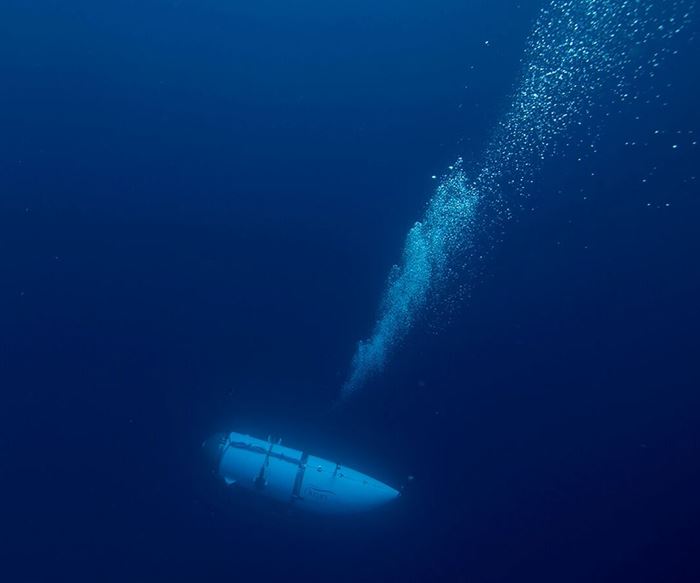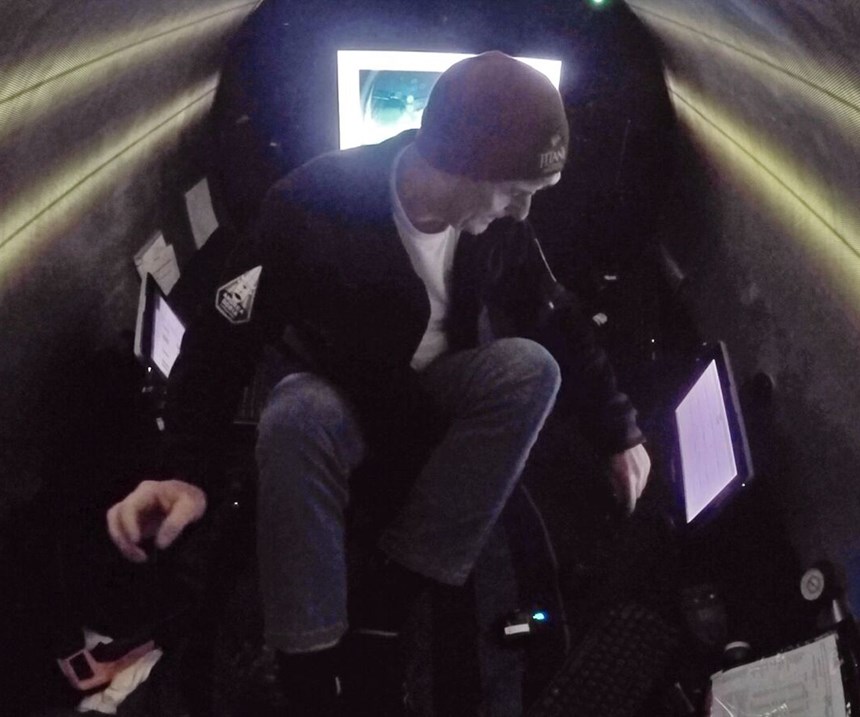OceanGate CEO pilots carbon fiber submersible in 4,000-m solo dive
4,000-m dive is the culmination of a comprehensive testing program in preparation for the vessel’s planned 2019 Titanic Survey Expedition.
OceanGate Inc. (Everett, WA, US), a provider of manned submersible services, has announced that OceanGate CEO, Stockton Rush, on Dec. 10 successfully piloted the world’s only privately-owned deep diving 5-person submersible, Titan, on a solo 4,000-m (over 2 miles) dive. Rush joins James Cameron as only the second person in history to complete a solo dive to this depth.
“This deep dive is a major milestone for OceanGate. Not only does it mean that Titan is prepared for our upcoming 2019 Titanic Survey Expedition,” says Rush, “but it also validates our innovative engineering and the repeated use of our carbon fiber and titanium hull. Titan can provide access to half of the worlds ocean depths for up to five people at a time.”
Engineered and built by OceanGate, Titan, is comprised of carbon fiber and titanium. The filament wound cylinder that forms the center section of the pressure vessel is 5" thick and made from over 800 layers of carbon fiber material. The entire pressure vessel is comprised of two titanium hemispheres, two matching titanium interface rings, and the 142 cm (56") internal diameter, 2.4-m (100") long carbon fiber wound cylinder – the largest such device ever built for use in a manned submersible. The use of carbon fiber reduces the overall weight compared to other deep-sea submersibles.
The 4,000-m dive is the culmination of a comprehensive testing program that began in 2016 with four pressure tests of a scale model, followed by construction and launch of the largest known submersible carbon fiber and titanium pressure vessel. Testing of Titan began in Puget Sound with 20 shallow manned dives, followed by a series of unmanned dives in The Bahamas to proof test the pressure hull to 4,000m in June.
Manned dive operations were conducted in The Bahamas from July to December and followed a methodical approach to validate the sub at specific depths. The 4,000-m validation dive took place on Monday, December 10, 2018 approximately 12 miles east of Little Harbour on Great Abaco Island. It took Rush seven hours to complete the dive which included multiple pauses during the descent to assess the integrity of the hull on OceanGate’s patent-pending Acoustic Real Time Monitoring system (RTM).
The RTM system is used to assess the health of the hull throughout every dive. The system uses acoustic sensors to detect sounds emitted by the carbon fiber material as it responds to the external pressure and also employs strain gauges to measure the physical deflection. The system makes it possible for Titan pilots to predict a potential failure, stop the descent and safely return to the surface.
This final step in depth validation means Titan is ready for its first major expedition – the 2019 Titanic Survey Expedition. Scheduled to begin in June 2019, it will be the first manned survey of the site since 2005. Laser scan data and images from this and future expeditions will be used to assess the Titanic’s rate of decay and produce a 3D virtual model of the wreck.
Related Content
The potential for thermoplastic composite nacelles
Collins Aerospace draws on global team, decades of experience to demonstrate large, curved AFP and welded structures for the next generation of aircraft.
Read MoreNatural fiber composites: Growing to fit sustainability needs
Led by global and industry-wide sustainability goals, commercial interest in flax and hemp fiber-reinforced composites grows into higher-performance, higher-volume applications.
Read MoreTU Munich develops cuboidal conformable tanks using carbon fiber composites for increased hydrogen storage
Flat tank enabling standard platform for BEV and FCEV uses thermoplastic and thermoset composites, overwrapped skeleton design in pursuit of 25% more H2 storage.
Read MorePlant tour: Teijin Carbon America Inc., Greenwood, S.C., U.S.
In 2018, Teijin broke ground on a facility that is reportedly the largest capacity carbon fiber line currently in existence. The line has been fully functional for nearly two years and has plenty of room for expansion.
Read MoreRead Next
All-recycled, needle-punched nonwoven CFRP slashes carbon footprint of Formula 2 seat
Dallara and Tenowo collaborate to produce a race-ready Formula 2 seat using recycled carbon fiber, reducing CO2 emissions by 97.5% compared to virgin materials.
Read More“Structured air” TPS safeguards composite structures
Powered by an 85% air/15% pure polyimide aerogel, Blueshift’s novel material system protects structures during transient thermal events from -200°C to beyond 2400°C for rockets, battery boxes and more.
Read MoreVIDEO: High-volume processing for fiberglass components
Cannon Ergos, a company specializing in high-ton presses and equipment for composites fabrication and plastics processing, displayed automotive and industrial components at CAMX 2024.
Read More
























